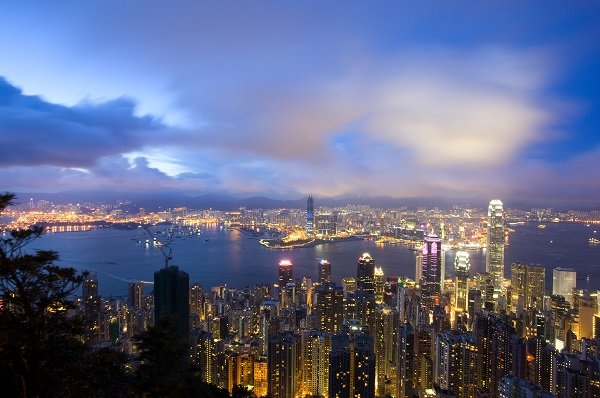
View over Hong Kong and Victoria Harbor
If you are joining or ending a luxury cruise in China this winter or next – be it in Hong Kong, Tianjin or another port – then why not consider customizing a private pre or post cruise tour.
Many cruises start and end in Hong Kong, so you are spoiled for choice for things to do prior to or after your cruise. There’s a side to Hong Kong for everyone – shop until you drop; enjoy some of the best food that Asia has to offer; visit temples and local markets; take a sampan ride out into Victoria Harbor to admire the view; and of course there are some wonderful hotels in which to kick back, relax and be pampered. Hong Kong really is THE place in which to indulge in luxury and spoil yourself.
If you only have an extra day or two to spare after taking in all that Hong Kong has to offer, then we’d recommend a day trip to Macao. Here you can experience a slice of the Mediterranean in China – Macao is a former Portuguese colony with regal squares and fountains, beautifully preserved Catholic churches and delicious Macanese cuisine which is a blend of Portuguese and Chinese. Of course Macao is also famous for its casinos and gambling. Those who wish to experience the glitzy, non-heritage side of Macao would be best staying overnight for this.
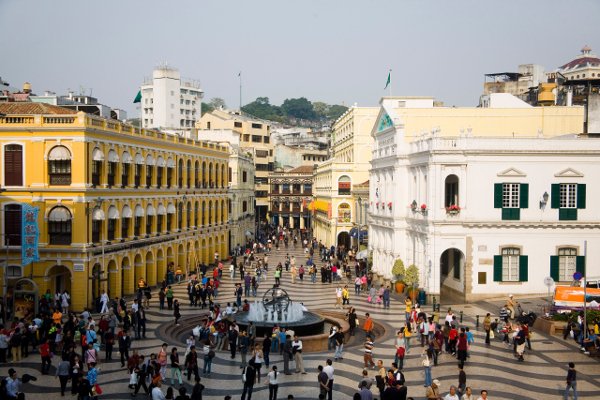
Colonial heritage site of Senado Square in Macao
For those starting or ending a cruise in Hong Kong with at least 3 – 4 days to spare, why not venture a short flight away to experience a bit of mainland China? Winter is an ideal time to visit Huangshan (Yellow Mountain), just under 2 hours flight time from Hong Kong. Although it’s cold it is the best time to see the ‘sea of clouds’ effect. You can spend a few hours hiking the mountain (you can also take the cable car up the peaks if you prefer) and you can wander around the beautiful nearby UNESCO world heritage Huizhou villages to get a flavor for traditional China.
Another UNESCO site that’s more than worth the time to get there is Lijiang in Yunnan province. It’s a great place to get lost in the cobbled streets and over the winding canals whilst enjoying the special views out over the traditional Chinese roofs of the old town. The hotels we recommend in Lijiang are built in the traditional style so it’s really a unique place to visit and experience. Our newest favorite is the Amandayan. Average daytime temperatures in winter in Lijiang are 57 – 63°F (14 – 17°C) but it can be close to freezing at night – just as well most places light cozy fires to keep you warm.
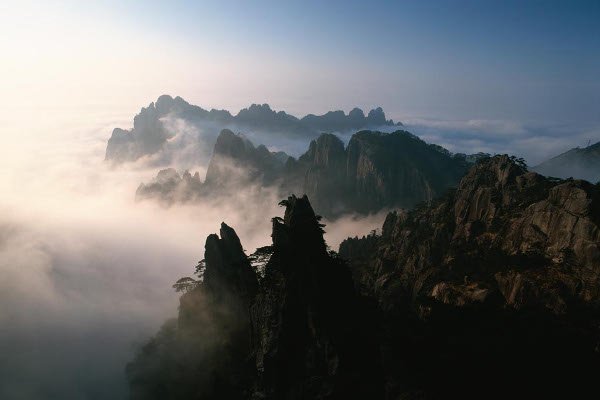
The 'sea of clouds' at Yellow Mountain
For a rather more unique side-trip from Hong Kong, you might consider a 3 or 4 day trip to Lhasa, Tibet (we generally recommend 4 because we suggest a day for your body to acclimate to the altitude). It’s actually a great place to visit off-season because it’s not so crowded and although cold, it’s very dry with blue skies most days. Your visit might even coincide with the Losar celebrations for Tibetan new year.
For visiting Shanghai or Beijing the season isn’t of so much importance but given that you’ve just booked with one of the best cruise lines in the world, don’t you want the equivalent in service and unique access for land touring in China? Visit a less touristed section of the Great Wall. Access a private palace within the Forbidden City not open to the general public. Hop on a quick flight to Xi’an to get exclusive access to the Terracotta Warriors. Take a walking tour of Colonial Shanghai with an historian. All this, plus you are relaxed traveling in your private luxury vehicle rather than sharing a guide and a driver on a bus with 48 other people.
For the utmost in service, unique access and ultimate flexibility that a private tour allows, consider using Imperial Tours for your pre or post cruise touring.

Exterior view of The Temple House
Last week Guy and I were lucky enough to be invited by The Temple House Hotel to visit the vibrant city of Chengdu, the capital of Sichuan Province and gateway to Western China. Most people think of pandas when they think of Chengdu and indeed, this is the home of the adorable Giant Panda. With the opening of The Temple House, however, witnessing the rise of one of China’s most exciting cities will make the experience that much more enjoyable.
The Temple House is the third of Swire’s ultra-chic boutique, “House” hotels (Upper House in Hong Kong, Opposite House in Beijing). The reason for the name is that the development, consisting of the hotel, residences, shops and restaurants is located in the area of Daci Temple. In fact, the entrance to the hotel is cleverly designed so that one walks through a Qing dynasty (1644-1911/12) courtyard in what used be to the study rooms of Confucian scholars. Some of the rooms have now been converted to a contemporary art gallery featuring Sichuanese artists. One is then taken through to the beautifully designed lobby and the hotel high rise beyond.
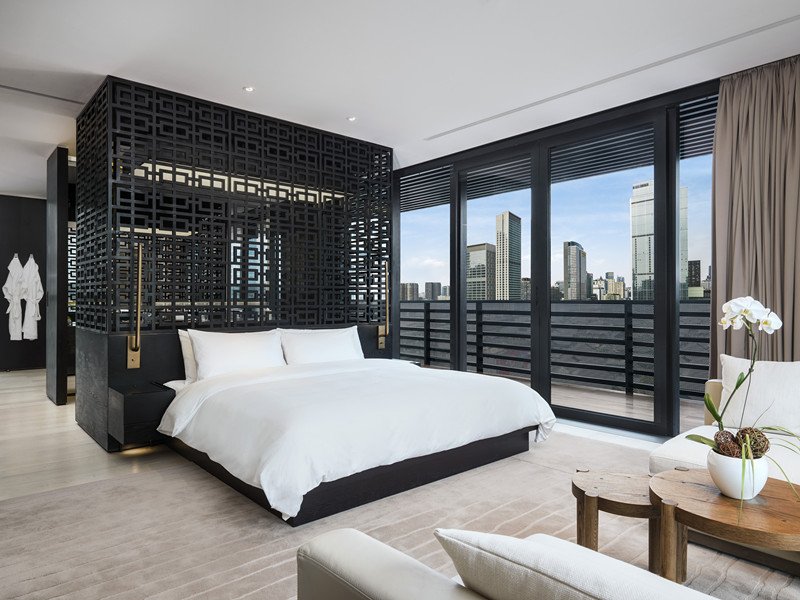
Studio 90 at The Temple House
Rooms start at a generous 60 sqm (Studio 60), or 646 square feet, and design is again foremost, but the style is warm and welcoming. Even the entry level room has a sitting area and the bathroom and dressing room are cleverly designed for maximum use of space. The next level up from the studios is the Temple Suite (90 sqm or 970 square feet), consisting of a sitting area and bedroom that can be closed off. The bedroom might feel a bit cramped to some, so suite guests may prefer the Studio 90 which is equal in size but without the partition between the living room and bedroom.
There is a fantastic swimming pool and gym, both with natural light. Another fabulous space is the spa, which is again housed around an historic courtyard. While the spa lacks a steam and sauna area, it doesn’t get much better than sitting in an ancient courtyard with beautiful trees both before and after the treatment. The treatment rooms, of course, have every modern amenity and the massages, using organic products from Australia, were flawless.
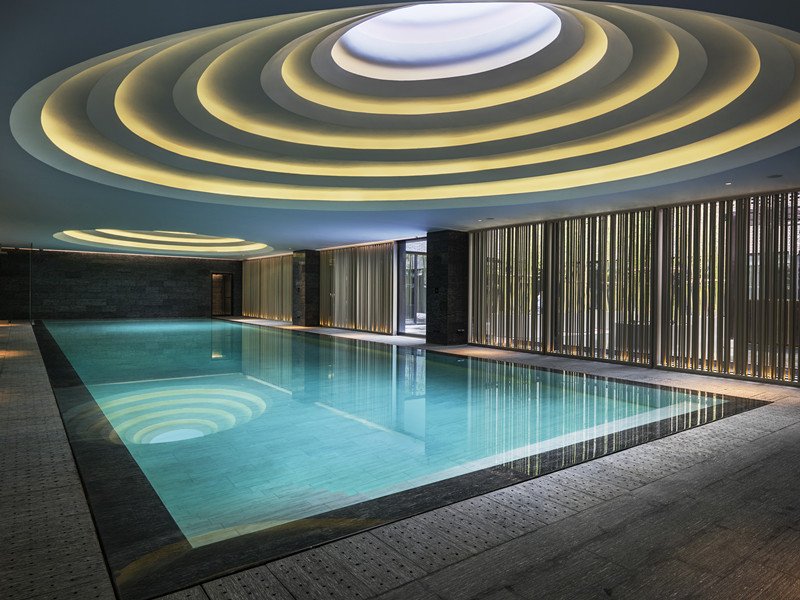
Swimming pool at The Temple House
Then there are the restaurants. Breakfast is served in Temple Café, serving a wide range of international cuisine. This is not a place just for hotel guests. In the afternoon and evening, it’s crowded with Chengdu’s glamorous set who stop in for high tea. Speaking of tea, the Teahouse is a dedicated tea house serving over a hundred varieties of tea and a menu that looks as though it has taken years to research and compile. They also serve light vegetarian food, tapas-style, perfect for those who don’t want a big lunch. Tivano is then the hotel’s upscale Italian; again a place to be seen.
One can’t discuss The Temple House without mentioning the Taikoo Li development, a “bustling urban lifestyle hub” which is also owned by Swire. There are more than a dozen restaurants, bars and all the luxury brands that one can dream of. What’s most interesting is that the place is packed with Chengdu locals, who are dressed to the hilt, enjoying themselves eating, chatting and shopping…don’t tell them that there is an economic downturn in China!
Contact us to design a private, customized itinerary which includes Chengdu and a stay at The Temple House.
(Above photo: Ganden Monastery near Lhasa)
Summer is fast disappearing and it’s time to think ahead and make your travel plans to see you through the winter. A more unusual winter vacation to tell your friends and family about back home is a trip to Lhasa to experience the Tibetan Lunar New Year celebrations, known in Tibetan as Losar (lo means ‘year’ and sar means ‘new’). This is a great time to visit Lhasa if you want a truly memorable and moving experience to come home with from your next trip.
Monk walks past the incense-filled Jokhang Temple in Lhasa
Lhasa comes alive during Losar – the sound of fireworks and smell of incense fills the air, whilst the sight of thousands of Buddhist pilgrims prostrating as they complete the kora (pilgrimage) around the Jokhang Temple is an almost spiritual experience – it’s hard not to get caught up in it all, believer or not. Lhasa is a spiritual place at all times but never more so than at Losar. Tibetans from far and wide travel to the capital sometimes walking vast distances in order to reach Lhasa to celebrate and attain religious merit by visiting the holiest of temples. It’s a wonderful time for people-watching as you are able to see devout Tibetans from many different parts of Tibet and witness their varied dress, features and customs.
Monks gather around the abbot in a ceremony at the Sera Monastery for Losar
The new year is symbolically about purification and welcoming in the new, thus leading up to the new year people clean their houses, whitewash their homes, wear new clothes and put out colorful new prayer flags. They also burn spontaneous bonfires in the street to burn away the old and the evil and bring good fortune with the new. It’s a vibrant time to be in Lhasa with brightly dressed locals flocking to the temples and monasteries to pray for the coming year and make offerings. Robed monks decorate the temples and special religious celebrations take place.
Bonfire in Lhasa during Losar to symbolically burn away the old
The 7th of February 2016 is new years’ eve and the 8th is the first day of the Tibetan year of 2143, so it’s best to arrive on the 6th so you can experience the build up to the celebrations. The private tour itineraries will include visits to a number of monasteries such as Sera and Ganden, the famous Jokhang temple and of course the formidable Potala Palace. In the evenings you can retreat to the luxury of the Shangri-La hotel’s oxygen lounge where you can relax, sip local barley wine and recover from the altitude, or if you wish your aches and pains to disappear then you can head to CHI, The Spa for a treatment.
New prayer flags for Losar against a whitewashed wall of Ganden Monastery
There are some inconveniences to traveling to Lhasa at this time of year that should be noted. There are more people, albeit it being busy with locals rather than Chinese tour groups as in the summer; some places are closed to visitors at certain times during important ceremonies so being flexible with itineraries is recommended; day time temperatures average 10°C or 50°F but of course temperatures at night fall below freezing (it will still be cozy in the hotel though!). However, far outweighing this in our opinion is that going during Losar you are participating in a significant religious and social event for Tibetans which is both incredibly moving and inspiring and which you will remember for years to come.
You can read the full Lhasa at Losar itinerary here. To book your trip to Lhasa please complete the booking form here or you can contact your nearest China luxury travel agent listed here.
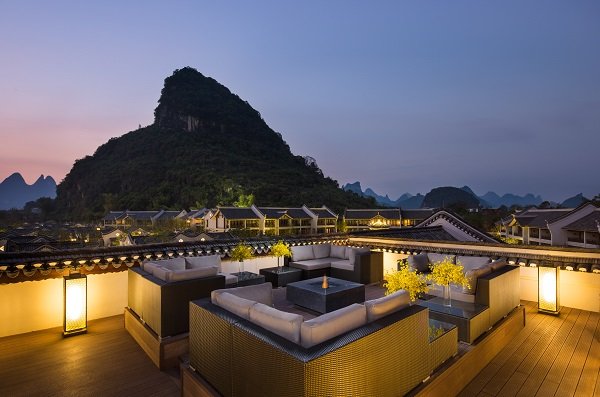
Above photo: Banyan Tree, Yangshuo
You may not automatically think of the terms ‘luxury’ and ‘rural China’ together in one sentence – but you should! Some of China’s best scenery and culture can be found outside of the cities, and who said rural can’t mean luxury? Take your pick from the following luxury resorts and locations as we choose our top 5 luxury rural getaways in China:
1. Guilin / Yangshuo: There can only really be one contender for the number one spot and that’s the Li River area around Guilin and Yangshuo. The rural scenery here is famous both abroad and in China, in China – it’s even printed on the 20 Yuan bills! The gorgeous riverfront scenery and sight of locals fishing with their cormorants is nothing short of idyllic. We recommend staying at the Banyan Tree for its wonderfully rural setting. Hop on a bike and weave through quaint farming villages and luminescent fields of rice, all the while with the towering limestone peaks looming overhead. There has never been a better rural getaway in the whole of China!
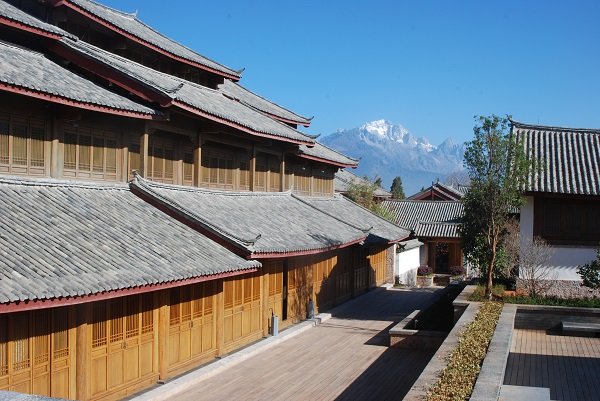
View of Jade Dragon Snow Mountain from Amandayan resort, Lijiang
2. Lijiang: The key to making this a great rural getaway is staying at one of the resorts on the outskirts of Lijiang – choose from the Banyan Tree, Amandayan or Pullman. The views out over the roofs of Lijiang’s old town and beyond to the foothills of the Himalayas and snow-capped Jade Dragon Snow Mountain are just sublime. A short drive or cycle away and you can wander along the beautiful cobblestoned streets of Baisha village where locals still hang corn to dry outside their homes.
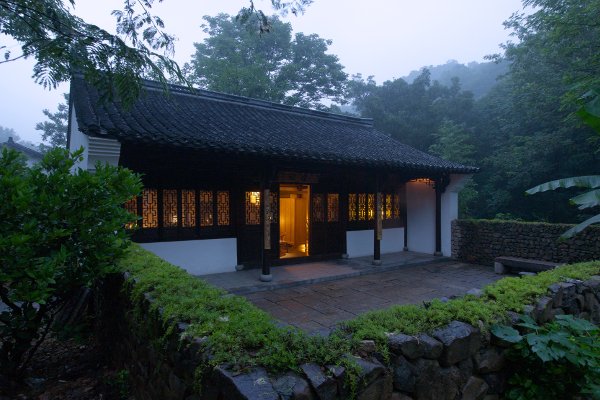
Amanfayun, Hangzhou
3. Hangzhou: We just had to include this into our entries because although Hangzhou is a city, the luxury hotels here have been designed with the city’s lakeside setting and surrounding rural beauty in mind. Ride in a gondola on West Lake, go temple touring in the surrounding hills, or just relax and soak up the natural beauty that has captivated travelers here for centuries. Your top luxury options include the Four Seasons and Amanfayun. The Aman in particular is a fantastic rural getaway as it’s a traditional village in itself and is surrounded by tea plantations and bamboo groves.
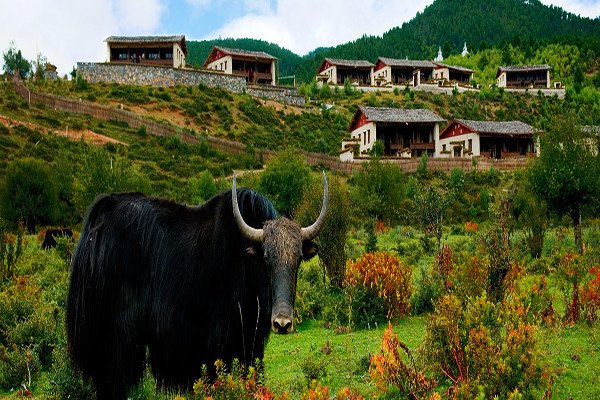
Banyan Tree Ringha, Shangri-La
4. Shangri-La: As an idyllic rural retreat, the name says it all! Shangri-La is a town located on the Tibetan plateau and is home to a beautiful monastery nicknamed the Little Potala. The countryside here is wonderfully rural – huge hay racks dot the landscape and herds of yaks graze the shores at Bita Hai Lake. The altitude (10,000 feet) means the air is fresh and rejuvenating, but you can also revitalize in the luxury spa at the Banyan Tree, located just outside of Shangri-La in the Ringha valley.
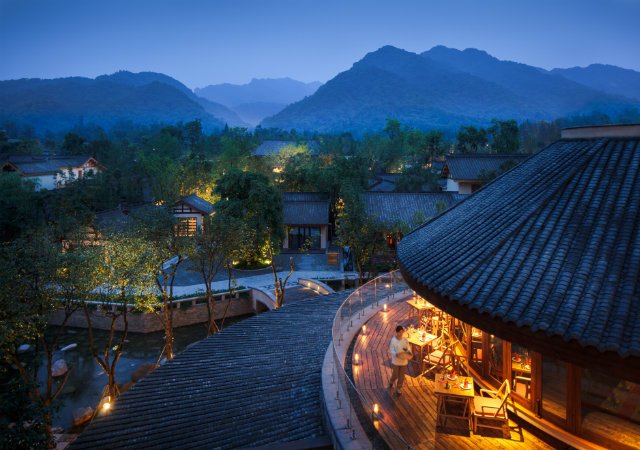
Six Senses, Qing Cheng Mountain
5. Qing Cheng Mountain: Qing Cheng Mountain is located an hour’s drive from Chengdu, capital of Sichuan province. The mountain is considered to be the birthplace of Taoism and is home to around a dozen important Taoist temples. Qing Cheng Mountain and the nearby Dujiangyan Irrigation System have together been designated a UNESCO World Heritage & Natural Cultural site. To fully appreciate the tranquility and serenity of the area’s 36 peaks, you might consider the new Six Senses resort opening in August 2015. This is not an “official” recommendation of the property because we don’t issue that until our managing partners have personally visited and given it their stamp of approval, but it’s definitely a property to watch out for. Six Senses have built a strong brand in South East Asia and we trust that their first property in China, and introduction of their brand to the Chinese traveler, will be fantastic.
Feeling inspired? Plan a luxury trip to China today and be sure to include one or more of these scenic rural destinations.
The Ganden Sumtseling Monastery (Songzanlin Monastery) is located near Shangri-La, on the Tibetan plateau in China’s south-west Yunnan province. If you’ve been to Lhasa and seen the Potala Palace you may think that this monastery is proof that all Tibetan monasteries look the same – and you’d be half right. The Sumtseling was in fact modelled on the Potala and has been nicknamed the ‘Little Potala’.
This is the largest Tibetan Buddhist monastery in south-west China. All told there are presently over 700 monks affiliated with the monastery which was established in the seventeenth century. That number is but a quarter of the number in its heyday when it operated as a centre of scriptural and spiritual learning and, like many monasteries, also functioned as a center of medicine, literature, and other forms of learning. Unlike many of the monasteries in Tibet which have not recovered their former vibrancy, the atmosphere in Sumtseling sparkles. Being closer to China and further from Lhasa has meant that political tensions are reduced, and the monastery can devote its attention to more traditional concerns.
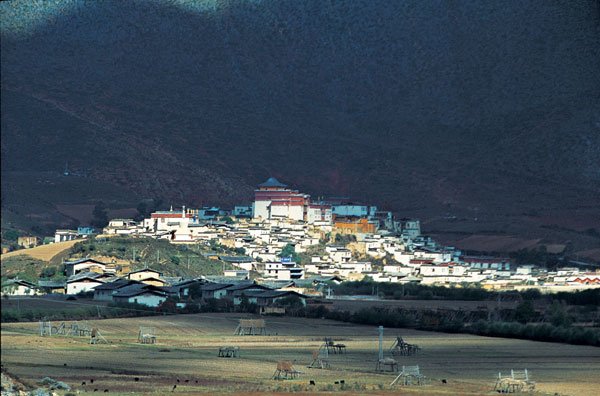
The monastery is also tied to the community in traditional ways with donations to furthering or upkeep of the monastery, be they financial or in kind, seen as a form of ‘merit making’. In Buddhist thinking, mere mortals such as we, can use the surplus of our good fortune to make this merit. In making merit we can ensure that our future life will be as good as or better than this one, and simultaneously we can aid the present. With the monastery divided into houses, and each house supported by a group of villages the institution truly resembles a microcosm of the community, and accordingly the ties between the surrounding communities and the monastery are strong.
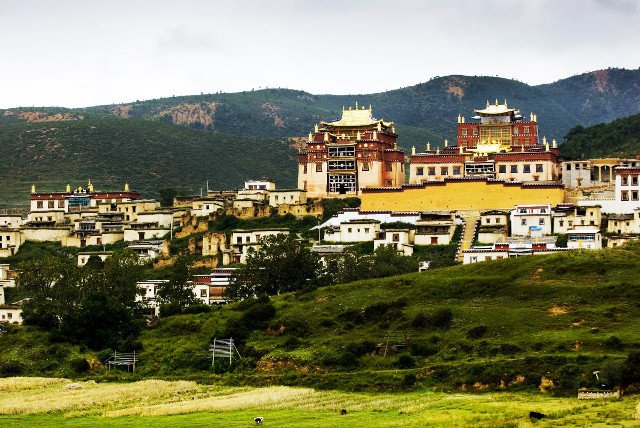
Closer to China proper than many other Tibetan monasteries, the Sumtseling has a history more intertwined with the Chinese than many of its siblings. The Qing dynasty Kangxi Emperor (r.1662-1722) was happy to give his blessings for the founding of the monastery, and to repeat his support when the monastery was involved in the search for the Seventh Dalai Lama. One unfortunate note concerns the modern period. When the Communist general He Long led one section of the Red Army through the area on the Long March in the 1930s, the monks donated needed supplies and helped direct the troops. By contrast, Chinese forces shelled the monastery in 1959 as they entered Tibet. Recent years have seen a return to better relations.
Sumtseling is one of two monasteries outside of Tibet that is highly recommended to visit if you are unable to travel to Tibet proper (the other being the Labrang Monastery in Xiahe, Gansu province). Feeling inspired? Enquire about taking a luxury tour to Shangri-La and the beautiful Little Potala with Imperial Tours now.

Now is an excellent time to consider Shanghai or Beijing for your next business meeting, event or incentive. These two cities offer world-class hotels, spacious meeting/dining facilities and fantastic leisure pursuits at a fraction of the price found in other international destinations.
Take the Peninsula Shanghai for example. On a price per square foot basis, this award-winning hotel comes in at just under a fifth of the cost of the Peninsula Paris. The Shanghai property was named World's Best Business Hotel in 2013 by Travel + Leisure and it has the largest deluxe rooms within the Peninsula brand. Similarly, the Four Seasons hotel in Beijing offers more spacious rooms than their London Park Lane property at about a fourth of the price. Downstairs at the Four Seasons Beijing, the team of Michelin-starred chefs at the award winning Cai Yi Xuan restaurant can present an extraordinary meal for considerably less than one at the Four Seasons Washington, DC.
 Leisure pursuits in China now rival that found in other international cities. Jack Nicklaus has designed golf courses in both Beijing and Shanghai. His Shanghai Lake Malaren Club will be hosting the BMW Shanghai Masters this November. His Pine Valley Golf and Country Club in Beijing is the first invitation-only golf club in China, featuring both a world-class course and private club space. The Tomson Shanghai Pudong Golf Club, which has hosted a number of PGA tournaments over the years, played host to the Volvo China Open this past April.
Leisure pursuits in China now rival that found in other international cities. Jack Nicklaus has designed golf courses in both Beijing and Shanghai. His Shanghai Lake Malaren Club will be hosting the BMW Shanghai Masters this November. His Pine Valley Golf and Country Club in Beijing is the first invitation-only golf club in China, featuring both a world-class course and private club space. The Tomson Shanghai Pudong Golf Club, which has hosted a number of PGA tournaments over the years, played host to the Volvo China Open this past April.
For those seeking pampering, China is no less a draw. Angsana Spa Shanghai, founded by Banyan Tree Spa, has won a coveted Travel + Leisure award for Best Newly Opened Spa. In Beijing, you might consider SPA by MTM. Kocoon Spa, with two locations in Beijing, is recommended by both the Luis Vuitton City Guide and VOGUE; so expect it to win some accolades in the near future. For an alternative take on wellness, those seeking to balance mind and body should look no further than a private session with a Tai Chi master.
Art lovers should not miss Shanghai’s Long Museum and Yuz Museum, both with extensive collections of contemporary Chinese art. In Beijing, the Red Gate gallery was Beijing’s first private contemporary art gallery and is located in a watchtower of the historic Ming dynasty city wall. The largest concentration of galleries exhibiting Chinese contemporary art is still found at the 798 Art District and the Caochangdi factory area where Ai Wei Wei’s studio is located. Expect chic cultural events this fall, such as Literary Festivals in Beijing and Shanghai, Beijing Design Week, and BolognaFiere Shanghai Contemporary Art Show. As China’s contemporary art scene continues to be red hot, there has never been a better time to head east and pick up a piece (or five) for your office collection.
Whether you are looking to relax, be active, or enjoy shopping or culture, China will pleasantly surprise you in terms of both its array of offerings as well as its unbeatable value. Book your meeting, event or incentive with Imperial Tours soon, because this excellent value that China offers today won’t last forever.
For more on upcoming events in China:
http://imperialtours.net/blog/contemporary-art-events-china
http://imperialtours.net/blog/literary-events
http://imperialtours.net/blog/2015-atp-tennis-events-china
http://imperialtours.net/blog/formula-1-chinese-grand-prix
http://imperialtours.net/blog/origins-golf-china
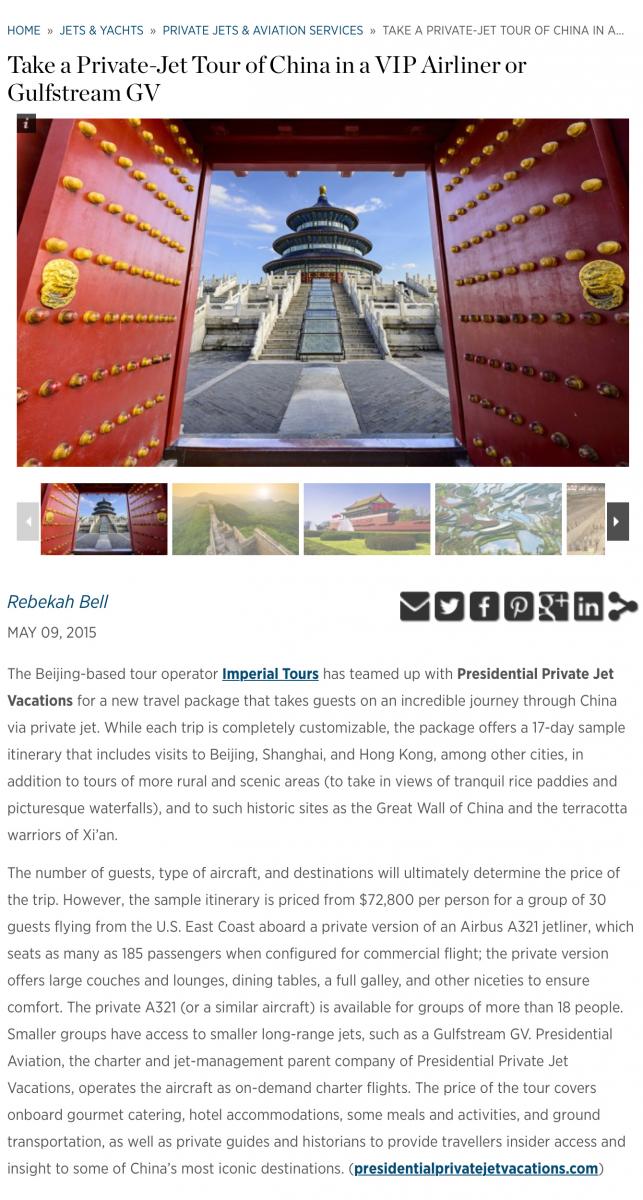
See original article on the Robb Report website. For more information about these magnificent Chinese cities, take a look at our “Destinations” pages.
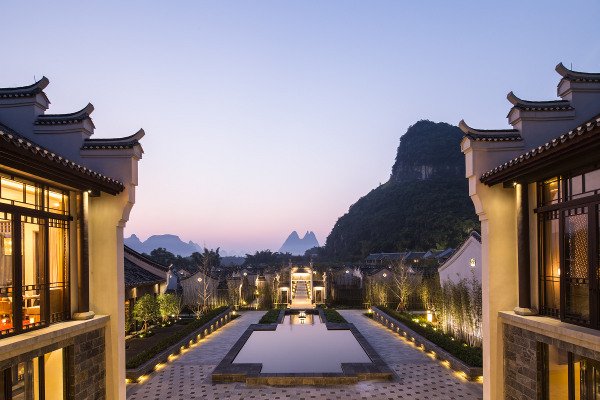
La apertura de Banyan Tree Yangshuo por fin ofrece a nuestros clientes un hermoso refugio mientras exploran la encantadora belleza del paisaje rural de la zona, sin tener que desplazarse desde la ciudad de Guilin. Para tener mayor viabilidad económica, esta lujosa propiedad de 142 habitaciones, ha sabido encontrar el equilibrio perfecto para seducir tanto al cliente chino, como al extranjero. Aunque el pueblo más cercano no es el más pintoresco, Banyan Tree ha sabido tomar prestado la ribera del rio y enfocar todo el protagonismo sobre el mismo.
Los fans de Banyan Tree Lijiang, su complejo inaugural en China que sirvió tanto para promover la provincia de Yunnan a extranjeros como para establecer un nuevo nivel de lujo en los resorts Chinos, entenderán el porqué de las características en la propiedad de Yangshuo. Por ejemplo, mientras que Banyan Tree Lijiang abrió sólo con amplias villas y no fue hasta años más tarde que ha añadido suites pequeñas y más económicas, el complejo en Yangshuo ofrece las dos opciones desde el primer día. Hay seis conjuntos de villas de dos dormitorios pegadas con una villa de un dormitorio, construidas a lo largo de la orilla del Rio Li. La siguiente opción es un conjunto de villas de un dormitorio en el centro del complejo con vistas a su propio jardín y por último, pueden elegir entre las suites con vistas a los jardines del complejo o a las montañas. Estas espaciosas suites se reparten en 5 edificios de dos niveles ubicados sobre el perímetro de la propiedad de cara al rio.
El edificio central aloja el vestíbulo, bar y una cafetería con terraza ofreciendo vistas espectaculares. El complejo tiene dos restaurantes, uno con menú occidental y el segundo de cocina China ofreciendo un mejor nivel que el primero. Los spa de Banyan Tree tienen una reputación excelente y el de Yangshuo no decepciona. Un equipo de profesionales Tailandeses ofrecen una variedad de masajes y tratamientos de belleza con precios aproximados de US$ 150 por 60 minutos. Precios razonables para extranjeros pero quizás alto para el cliente Chino que puede contratar un médico tradicional Chino por una quinta parte.
Lo que es verdaderamente sorprendente, dado lo bien que la zona se presta para estancias en familia, es el tamaño de la piscina, curiosamente pequeña. Siendo una zona de clima tropical y tomando en cuenta que lanzarse al rio no es una opción, nos esperábamos una piscina más grande para los adultos con una segunda para los pequeños. Tenemos la esperanza de que una fuerte demanda de los clientes domésticos, les obligue a corregirlo. Aunque la natación no es muy del agrado entre los adultos Chinos, a los más pequeños les vuelve locos.

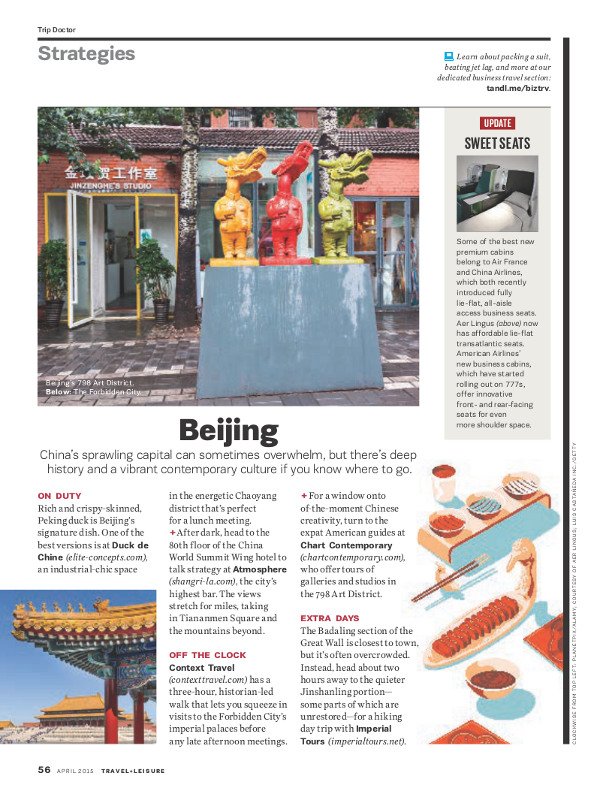

Savor a world of authentic cuisine… in China. Enjoy a 9-night culinary adventure through Beijing, Chengdu and Shanghai with VIP treatment featuring complimentary breakfasts, a special welcome amenity at each hotel, and a custom book on Chinese cuisine.